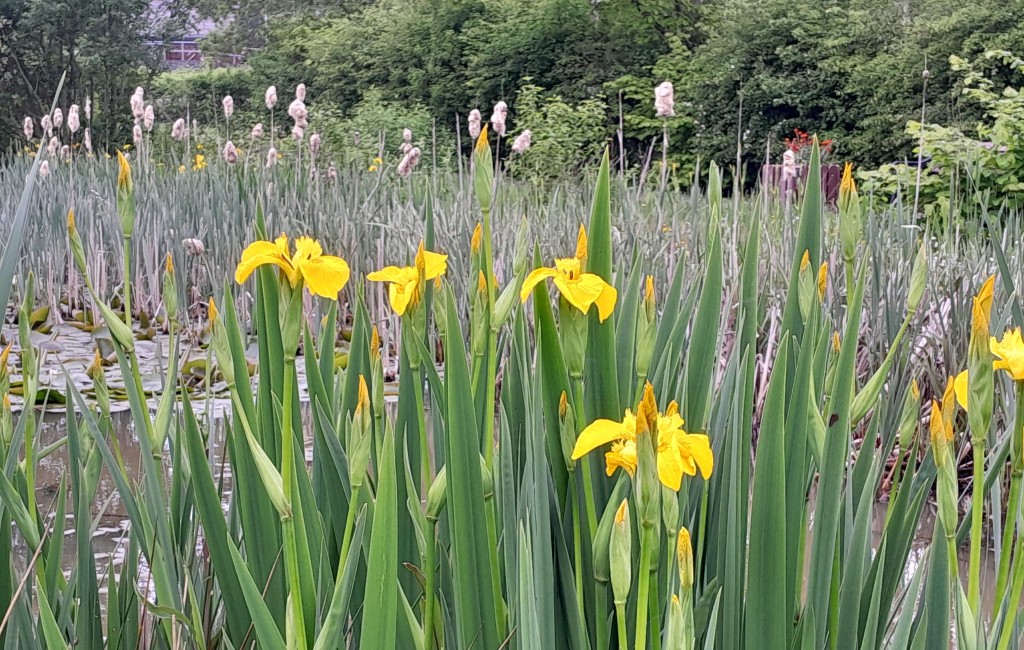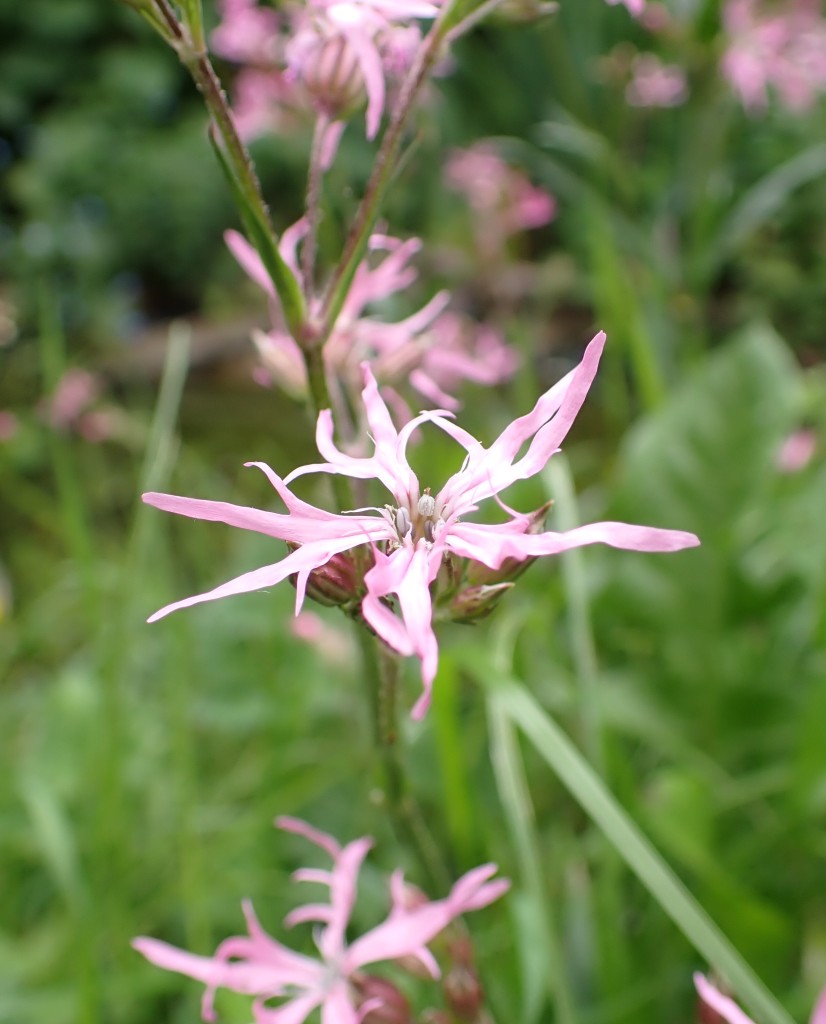Before the pile of marking I’ve been expecting arrived, I carved out some time in my garden and allotment last week as well as spending more time in the Botanic Gardens with students – good for both them and me! On Tuesday we built a bug hotel in the rain in the new wildlife area behind the bird hide. Peter had sourced lots of good materials for the students to use – a wide variety of bricks and roof tiles, logs with holes of different sizes drilled in the ends, garden canes and straw. In a nice example of a closed environmental loop there was also fleece from the Hebridean sheep who graze the arboretum and meadow areas of the garden at various times of the year to help keep the rank grasses under control and promote biodiversity.

On a drier day, whilst enjoying lunch by Mountjoy pond, I spotted orchid rosettes under the picnic benches; I wait with some trepidation to see how well they survive all the coming and going and am wondering whether they might benefit from some signage. The first Yellow flag Irises are out by the ponds and there are plenty of Goldfinches around attracted, I suspect, by the fluffy bullrush seed heads. One of the best discoveries of the week was that we do have tadpoles in our pond, despite my doubts. There are nowhere near as many as last year but only one or two would be expected to make it to adulthood in any case. The thriving plant by the pond, which I half-recognised in bud, turns out to be a solid looking clump of Ragged robin, Lychnis flos-cuculi, which I grew from seed a couple of years ago – another nice surprise.



On the water, I enjoyed watching Grey wagtails flitting around the gravel bars, the usual heron cunningly disguised as a garden ornament and a pair of swans nest-building on a rather precarious looking bit of bank by the storm drain outfall. I hope we don’t have too much rain – the nest would easily be washed away.
The Rowan and Whitebeam trees in the garden are in flower now, as is the Hawthorn in the allotment hedge. The benefits of No-mow May are plain to see, from colourful road verges full of meadow buttercups and bush vetch to Pignut and Oxe-eye daisies on the Science site.
The end of the week meant a lovely Sunday afternoon drive to Kirkcudbright to visit my parents. Lots of cut silage was drying in the fields on my way across, farmers making the most of a few warm, sunny days. Walking along the river after dinner I saw lots of Hemlock water droplet nearly in flower and Meadow foxtail out in full flower – a sure sign that my hayfever is about to ratchet up in intensity. The Merlin app told me that the Raucous sound coming from the rushes was, indeed, a Sedge Warbler in the reeds.
The garden is looking beautiful. Globe flowers, Ragged Robin and Water avens have joined the Candelabra primroses and Forget-me-nots round the pond and what used to be a rather patchy back ‘lawn’ is now a colourful medley of Red Campion and Buttercups.The front lawn has big patches of Bird’s foot trefoil in flower too.



There are Blackbirds nesting in the apple tree and one rather dopy baby flew straight into the French windows whilst I was sitting marking this week. Fortunately he seemed unharmed and flew away, as soon as he’d regained his dignity.
In the allotment I’ve finally got my leeks and Charlotte potatoes planted and have resorted to buying some French bean and Red cabbage seedlings as it’s really too late to sow them from seed. I’ve put some crushed egg shells around them in the hope the slugs and snails don’t get the lot!
This week I’ve read From Field and Forest, by Anna Koska, a beautifully produced and illustrated account of a year in the life of the plants and animals which populate the artist’s home and land. In places it seems a little over-written to me but she does conjure up the beauty of a place in the country where I could only dream of living, with a meadow and woodland as well as a vegetable garden and orchard.